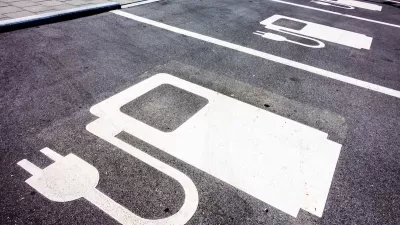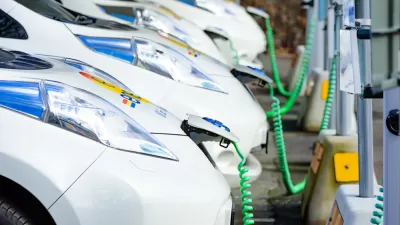Brad Plumer examines the global need to abate climate change amidst a new report showing carbon emission reductions being claimed by countries around the world can be deceiving.
A new report from the Breakthrough Institute details the ways developed nations have reduced carbon emissions between 1971 and 2006. The results demonstrate the differences in emission reductions from countries who are switching to cleaner energy sources in earnest, and those who have simply outsourced their most emission producing sectors elsewhere.
Rather than shifting to cleaner energy sources, countries such as Ireland, Britain and the United States have in reality been outsourcing their carbon pollution, by shifting their farming and manufacturing sectors abroad and increasing imports. "In the United States, manufacturing's share of the economy has fallen 45 percent since 1971 and imports' share has increased 200 percent." According to the Proceedings of the National Academies of Science in 2011, 'these "outsourced emissions" essentially cancel out any progress made under the Kyoto Protocol."
Countries like France and Sweden have become greener in more sustainable, and beneficial, ways. "France, for instance, achieved much of its decarbonization since 1971 by making a big push on nuclear power. Likewise, Sweden has been using less oil over the past four decades, while relying more on nuclear and geothermal and biofuels," states Plumer.
FULL STORY: Very few countries have cut their carbon emissions without cheating

Planetizen Federal Action Tracker
A weekly monitor of how Trump’s orders and actions are impacting planners and planning in America.

Map: Where Senate Republicans Want to Sell Your Public Lands
For public land advocates, the Senate Republicans’ proposal to sell millions of acres of public land in the West is “the biggest fight of their careers.”

Restaurant Patios Were a Pandemic Win — Why Were They so Hard to Keep?
Social distancing requirements and changes in travel patterns prompted cities to pilot new uses for street and sidewalk space. Then it got complicated.

Platform Pilsner: Vancouver Transit Agency Releases... a Beer?
TransLink will receive a portion of every sale of the four-pack.

Toronto Weighs Cheaper Transit, Parking Hikes for Major Events
Special event rates would take effect during large festivals, sports games and concerts to ‘discourage driving, manage congestion and free up space for transit.”

Berlin to Consider Car-Free Zone Larger Than Manhattan
The area bound by the 22-mile Ringbahn would still allow 12 uses of a private automobile per year per person, and several other exemptions.
Urban Design for Planners 1: Software Tools
This six-course series explores essential urban design concepts using open source software and equips planners with the tools they need to participate fully in the urban design process.
Planning for Universal Design
Learn the tools for implementing Universal Design in planning regulations.
Heyer Gruel & Associates PA
JM Goldson LLC
Custer County Colorado
City of Camden Redevelopment Agency
City of Astoria
Transportation Research & Education Center (TREC) at Portland State University
Camden Redevelopment Agency
City of Claremont
Municipality of Princeton (NJ)





























